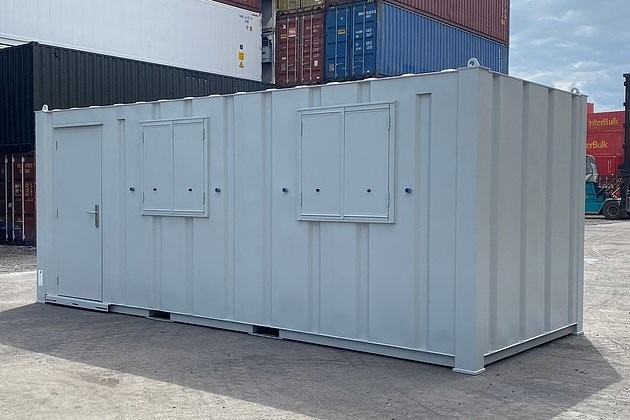What Is It That Makes Chemical Storage Containers So Popular?
Chemical Storage Containers
The best conditions for storage of chemicals can improve quality of the product and reduce the likelihood of chemical reactions. Separating compressed gases that are incompatible (oxidizing versus flammable) and separating empty from full cylinders is also beneficial.
Chemical storage containers, also referred to as safety cabinets or dangerous goods cabinets, are designed and constructed to keep hazardous chemicals stored in indoor locations. They are a perfect blend of safety, portability, and efficiency to minimize risk and maximize the sites.
Insulation
In addition to keeping your chemicals and other hazardous substances at safe temperatures, the insulation in chemical storage containers can also help keep mildew and mold from growing. Insulation is important for substances that are sensitive to moisture, like sodium chlorite or certain acids.
Based on where you reside various types of insulation are required to protect your containers for storing chemicals. For instance in warmer regions you'll need to choose an insulation that reflects heat and provides protection from the sun. In contrast, in colder climates, you'll require a material that offers thermal resistance and has an R-value that is higher.

Consider both the effectiveness and the installation process when selecting the type of insulation you want for your chemical storage containers. Spray foam insulation for instance, is an efficient and cost-effective choice that is simple to install. It's typically sprayed onto the walls of the container and expands to form an airtight seal that ensures the temperature and prevents condensation.
Another insulation option is batt insulation, which is made up of rolls or sheets that are flexible made of mineral wool, fiberglass, or natural fibers like wool or sheep's wool. If installed correctly, this type of insulation can reduce energy costs by keeping the contents of your chemical storage containers warm or cold for longer periods of time.
The shape and size of the containers for chemical storage should be considered when choosing an insulation material. The size of the container determines the amount of your chemical can be stored at a time, and can affect the safety. In general, a larger container can hold more liquid at a time than a smaller container.
Whatever size your chemical storage containers are the
cog containers must be secured in a safe manner to prevent accidents and comply with campus and federal regulations. Chemicals should not be kept close to exits, areas that have large foot traffic, or on windows with ledges. In addition, containers should be kept sealed unless being used or dispensing. Furthermore, all chemicals that are hazardous should be stored in a safe storage cabinet or storage locker that has been welded, riveted, or sealed with a durable epoxy.
Safety
It is crucial to take safety and handling measures when transporting or storing chemical containers. This involves segregating mixed classes of chemicals, including acids and bases, during the transport process to prevent chemical reactions that could be dangerous or harmful. It is also crucial to ensure that all chemicals are sealed and capped. This reduces risk of evaporation and spillage and is a legal requirement for certain chemicals. All capped containers must have child-resistant features and be kept in areas that are well ventilated to dissipate the fumes.
It is important to ensure that all chemicals are stored in containers that are safe and secure. You should also follow the storage requirements of each class of chemical. For instance, corrosives as well as acids must be stored separately and flammable liquids have to be stored in cabinets equipped with fire-proof features. Certain chemicals must be confined to a specific area within a lab like a fume hood or a chemical storage room. The performance of the hood can be impacted if chemicals are crammed into these spaces. This can also cause accidents.
Another crucial aspect to secure chemical storage is separating chemicals according to compatibility. If you store chemicals alphabetically, it's possible to put incompatible chemicals together, which increases the chance of contamination and unintentional chemical reactions. Separating chemicals based on their hazard classification can help reduce the risk. It is also important to check the SDS of each chemical prior to storage or using them. This will provide you with the necessary information to determine if it's an health, fire or reactivity risk and what precautions must be taken when handling it.
To limit the spread and damage of the flames, chemical storage rooms must be constructed using durable fire-resistant materials that can withstand high temperatures for a long time. This is particularly important in areas where there is storage of dangerous or flammable chemicals. It is also essential that storage spaces are ventilated and kept away from direct sunlight or other heat sources. It is also crucial to regularly inspect storage areas and replace any containers that show signs of corrosion, cracking or degrading. Restricting access to these areas and identifying expired chemical products ensures a high level of security and compliance in the laboratory.
Portability
Chemical storage containers are flexible, economical solutions that allow for industries to adapt to a range of chemical and task. They are constructed of sturdy materials that can be able to withstand the corrosive effects of chemicals. They are simple to transport and perfect for temporary projects. Prefabricated chemical storage tanks are a great alternative to traditional tank infrastructure that requires a lot of installation and upkeep. They can help save facilities time and money.
Utilizing chemical storage containers is one of the best methods to store hazardous chemicals on site. They provide a safe and reliable method of protecting your employees, assets and the surrounding environment from spills and fires. These containers are designed in accordance with Australian standards that stipulate minimum leakage rates and maximum capacity spills. Some containers also have double-door designs and fireproof linings for additional security and safety.
Choose a container that is appropriate in size for the amount of chemicals you will be keeping. This will ensure that you do not risk overfilling or storing unnecessary chemicals that could be hazardous and wasteful. You can pick from a variety of sizes, ranging from small 80 litre models up to larger IBC stores with a capacity up to 10,000 litres.
You should consider purchasing an IBC that has a vapor barrier if you're storing chemicals that are flammable. This will prevent the chemicals from burning at high temperatures. It's particularly useful for fluids that ignite. If you're keeping chemicals that are corrosive to metals opt for a tank that has a stainless steel liner. These tanks are more resistant to corrosion than steel or fiberglass options and are much safer to store chemicals that are corrosive.
Incompatible chemicals should be stored in separate areas in order to minimise risks of cross-contamination. This will ensure that everyone is protected. To ensure a safe and efficient workplace, it is essential to have a system in place for storing incompatible chemicals separately. Incompatible chemicals must be grouped according to their hazard classes. It is essential to refer to the SDS of the manufacturer for specific storage instructions.

Efficiency
Chemicals of every kind must be stored in the most efficient possible way. This will ensure that they work in the way they were intended to and reduce the possibility of quality issues. Proper storage of chemicals reduces the risk of contamination and temperature fluctuations that could cause them degradation. This ensures that businesses can maintain the quality of their products. Dedicated chemical storage facilities provide the most efficient means of storage of these chemicals.
When choosing chemical storage containers it is essential to consider their size, volume and weight. The material must also be compatible with the chemicals to avoid the loss of chemical or degradation over time. Glass containers, like are suitable for a wide range of chemicals, excluding those that react (e.g. Hydrofluoric acid. The shape of the container is also important, as it will impact stability and ease of pouring. Finally, the container should have child-resistant features and an opening to allow adequate airflow.
Separating incompatible chemicals keeps them from accidental mixing, which could lead to fires and explosions as well as the production of toxic gas. It is essential to adhere to the recommended labeling standards, like GHS Pictograms for each chemical category. This will help you identify potential hazards and the appropriate PPE for handling and disposal.
Access to spill clean-up materials is vital for quick reaction in the event of an accident. This can include everything from absorbent pads to neutralizers. It is important to remember that some chemicals might require additional precautions in the case of spills like placing them in trays, or storing them away from sources of heat.
In laboratories, space is usually limited. Therefore it is crucial to organize chemicals correctly in order to ensure security and efficiency. Idealy, a floorplan should be developed that arranges chemicals according to their classification and usage. The most frequently-used chemicals should be kept within easy reach while less-used ones can be stored in remote locations.
It is crucial to select the right shelving system to maximize the efficiency. Metal shelves are great for flammable and hazardous chemicals since they are sturdy enough to hold their weight without tipping over. Additionally plastic shelving is a viable option for non-hazardous chemicals and can be an economical choice for labs with a lot of space. In either scenario, it is essential to evaluate the load capacity of any rack or shelving systems prior to installing them in a lab.
 Consider both the effectiveness and the installation process when selecting the type of insulation you want for your chemical storage containers. Spray foam insulation for instance, is an efficient and cost-effective choice that is simple to install. It's typically sprayed onto the walls of the container and expands to form an airtight seal that ensures the temperature and prevents condensation.
Consider both the effectiveness and the installation process when selecting the type of insulation you want for your chemical storage containers. Spray foam insulation for instance, is an efficient and cost-effective choice that is simple to install. It's typically sprayed onto the walls of the container and expands to form an airtight seal that ensures the temperature and prevents condensation. Efficiency
Efficiency